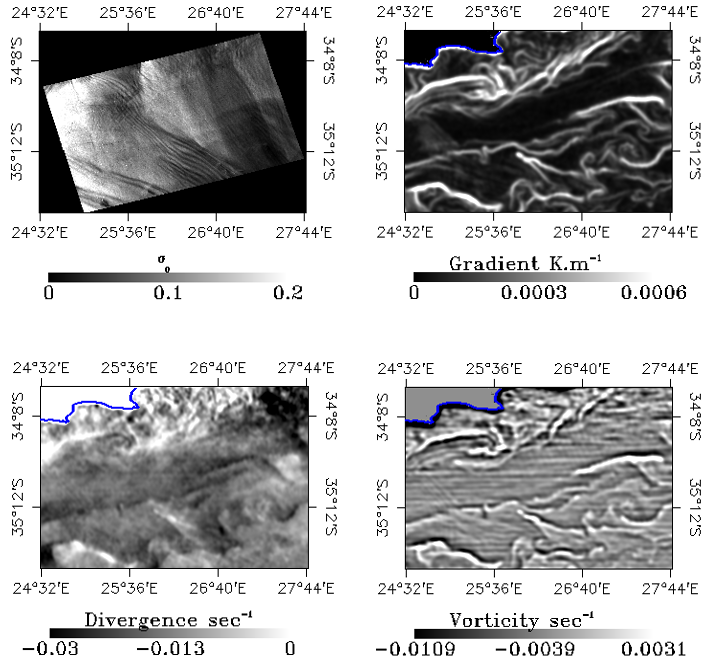The idea behind new Explorer Mission of the European Space Agency, Harmony, is to use two passive micro-satellites (Concordia and Discordia) flying in formations (cross and along-track) with a Sentinel-1D (S1D). This constellation, of two passive receivers and a conventional Synthetic Aperture Radar (SAR), will provide interferometric SAR capabilities. The scientific objectives of SAR observations of Harmony relate, primarily, to the characterization of dynamic processes above and of ocean surfaces.
ITC is examining the feasibility of expanding Harmony’s capabilities to include TIR for water quality applications. So far, the ITC team was able to infer the surface dynamics from the temperature gradient and established the observation evidence of temperature effects on the wind field. The application of this finding comes in handy in a changing climate where the rising global temperature is leading to more extreme weather events.
The figure below shows SAR observation obtained from Sentinel-1 C band of the Agulhas current (right upper panel) collocated with the gradient of sea surface temperature derived from the Sentinel-3-SLTSR (upper right panel). The lower panels show the vorticity and divergence of sea surface current estimated from the wind field and the gradient of sea surface temperature.

Collocated S1-SAR (acquired at 17:00) and S3-SLTSR (acquired at 20:44) of the Agulhas, 23 July 2020.



